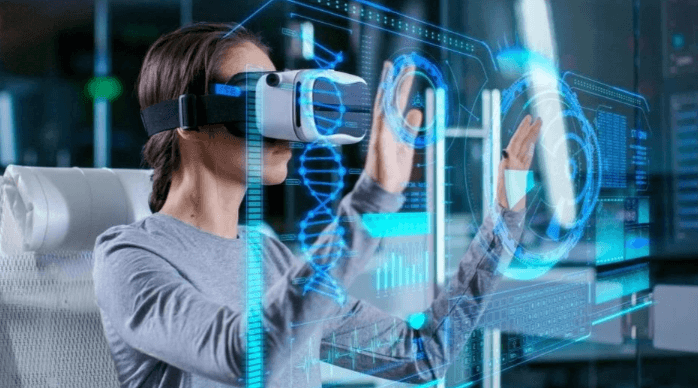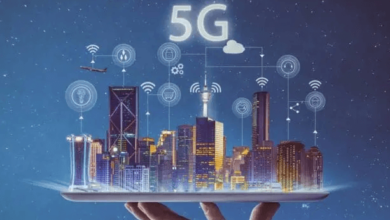How are virtual and augmented reality technologies transforming professional training and education?

Introduction
Virtual Reality (VR) and Augmented Reality (AR) technologies are not just about gaming and entertainment; they are rapidly transforming the landscape of professional training and education. These immersive technologies offer interactive and engaging learning experiences that go beyond traditional methods. From medical simulations to technical skills training, VR and AR are making learning more effective and efficient. This article explores the various ways these technologies are revolutionizing professional training and education, highlighting their benefits, applications, and future potential.
Understanding Virtual and Augmented Reality
Virtual Reality (VR) immerses users in a fully digital environment, often using headsets and controllers. This technology creates a simulated experience that can mimic real-world scenarios or create entirely new environments.
Augmented Reality (AR) overlays digital information onto the real world, usually through smartphones, tablets, or AR glasses. This technology enhances the user’s perception of reality by adding digital elements such as images, sounds, and text to their view of the physical world.
The Rise of VR and AR in Education
Historical Context
The integration of VR and AR in education began with the advent of personal computers and the internet. Early adopters recognized the potential for these technologies to create more engaging and interactive learning experiences. Over the years, advancements in hardware and software have made VR and AR more accessible and affordable, leading to their increased adoption in professional training and education.
Current Trends
Today, VR and AR are being used in various educational settings, from K-12 classrooms to corporate training programs. Schools and universities are incorporating these technologies into their curricula to enhance student engagement and comprehension. Similarly, businesses are using VR and AR to provide employees with hands-on training in a safe and controlled environment.
Benefits of VR and AR in Professional Training
Enhanced Engagement and Retention
Traditional training methods often rely on lectures, textbooks, and videos, which can be passive and less engaging. VR and AR provide immersive, interactive experiences that can significantly enhance engagement and retention. Learners can actively participate in simulations, making the training more memorable and effective.
Safe Learning Environment
In fields such as healthcare, aviation, and manufacturing, practical training can be risky and expensive. VR and AR offer a safe and cost-effective alternative. Trainees can practice procedures and skills in a virtual environment without the risk of injury or damage to equipment.
Personalized Learning
VR and AR technologies allow for personalized learning experiences tailored to individual needs and learning styles. Instructors can customize simulations and scenarios to address specific skills and knowledge gaps, providing targeted training that meets each learner’s unique requirements.
Applications of VR and AR in Various Fields
Healthcare Training
In healthcare, VR and AR are being used to train medical students and professionals in a variety of procedures. For example, VR simulations can replicate surgeries, allowing trainees to practice techniques and develop their skills in a risk-free environment. AR can provide real-time guidance and information during actual procedures, enhancing accuracy and efficiency.
Technical Skills Training
Industries such as automotive, aerospace, and manufacturing are using VR and AR to train employees in technical skills. VR can simulate complex machinery and processes, enabling trainees to learn and practice without the need for physical equipment. AR can assist workers by overlaying instructions and diagrams onto real-world objects, improving accuracy and efficiency.
Corporate Training
Businesses are leveraging VR and AR for a range of training programs, from onboarding new employees to developing leadership skills. VR can create realistic scenarios for soft skills training, such as conflict resolution and customer service. AR can enhance on-the-job training by providing real-time information and feedback.
Future Potential of VR and AR in Education
Expanding Accessibility
As VR and AR technologies continue to evolve, they are becoming more accessible and affordable. This increased accessibility will enable more educational institutions and businesses to integrate these technologies into their training programs, reaching a broader audience and improving learning outcomes.
Innovations in Content Creation
Advancements in content creation tools are making it easier to develop high-quality VR and AR experiences. Educators and trainers can create customized simulations and scenarios that meet specific learning objectives, enhancing the relevance and effectiveness of the training.
Integration with Other Technologies
The integration of VR and AR with other technologies, such as artificial intelligence (AI) and the Internet of Things (IoT), holds great promise for the future of education. AI can provide personalized feedback and adapt learning experiences based on individual performance, while IoT can connect virtual simulations with real-world data, creating more immersive and realistic training experiences.
Challenges and Considerations
Technical Limitations
While VR and AR technologies have advanced significantly, there are still technical limitations that need to be addressed. High-quality VR and AR experiences require powerful hardware and reliable internet connections, which may not be available in all educational settings.
Cost and Accessibility
The cost of VR and AR equipment and content creation can be a barrier for some institutions and organizations. As the technology becomes more mainstream, it is expected that costs will decrease, but ensuring widespread accessibility remains a challenge.
User Adoption and Training
Successfully integrating VR and AR into professional training and education requires user adoption and training. Educators and trainers need to be comfortable with the technology and understand how to effectively incorporate it into their programs. Providing adequate training and support is essential to overcome this barrier.
Case Studies of Successful Implementations
Stanford Medical School
Stanford Medical School has implemented VR simulations to train medical students in various procedures. These simulations provide a safe and controlled environment for students to practice and hone their skills, improving their confidence and competence.
Boeing’s AR Maintenance Training
Boeing has adopted AR technology to train maintenance workers on aircraft assembly and repair. AR glasses overlay instructions and diagrams onto real-world components, guiding workers through complex tasks with precision and accuracy.
Walmart’s VR Training Program
Walmart uses VR to train employees in customer service and management skills. The VR simulations create realistic scenarios that help employees develop their soft skills and prepare for real-world interactions.
Best Practices for Implementing VR and AR in Training
Start Small and Scale Gradually
When implementing VR and AR technologies, it’s important to start with small, manageable projects and scale gradually. This approach allows organizations to evaluate the effectiveness of the technology and make adjustments as needed.
Focus on Quality Content
The quality of the content is critical to the success of VR and AR training programs. Invest in high-quality simulations and scenarios that are relevant and engaging. Collaborate with subject matter experts to ensure the content is accurate and effective.
Provide Adequate Support and Training
To ensure successful adoption, provide adequate support and training for educators, trainers, and learners. Offer workshops, tutorials, and ongoing assistance to help users become comfortable with the technology and integrate it effectively into their training programs.
The Role of VR and AR in Lifelong Learning
Continuous Skill Development
In today’s rapidly changing job market, continuous skill development is essential. VR and AR can support lifelong learning by providing opportunities for ongoing training and skill development. These technologies enable learners to stay current with industry trends and advancements, enhancing their career prospects.
Remote Learning Opportunities
VR and AR offer unique opportunities for remote learning. Learners can access high-quality training experiences from anywhere in the world, breaking down geographical barriers and increasing access to education and training.
Ethical Considerations and Data Privacy
Protecting Learner Data
As with any digital technology, protecting learner data is a critical concern. Organizations must implement robust data privacy measures to ensure the security and confidentiality of learner information.
Ensuring Fair Access
To avoid exacerbating existing inequalities, it is important to ensure fair access to VR and AR technologies. Efforts should be made to provide equal opportunities for all learners, regardless of their socio-economic background.
FAQs
What is the difference between VR and AR?
Virtual Reality (VR) creates a fully digital environment, immersing users in a simulated world. Augmented Reality (AR) overlays digital information onto the real world, enhancing the user’s perception of reality.
How are VR and AR used in medical training?
VR and AR are used in medical training to simulate procedures, allowing trainees to practice techniques in a safe environment. AR can provide real-time guidance and information during actual procedures, improving accuracy and efficiency.
What are the benefits of VR and AR in corporate training?
VR and AR enhance corporate training by providing immersive, interactive experiences that improve engagement and retention. These technologies allow for safe, cost-effective training and can be tailored to individual learning needs.
What challenges do organizations face when implementing VR and AR?
Organizations face challenges such as technical limitations, cost, and user adoption when implementing VR and AR. Providing adequate training and support is essential to overcome these barriers.
How do VR and AR support lifelong learning?
VR and AR support lifelong learning by providing opportunities for continuous skill development and remote learning. These technologies enable learners to stay current with industry trends and advancements.
What ethical considerations are associated with VR and AR in education?
Ethical considerations include protecting learner data and ensuring fair access to VR and AR technologies. Organizations must implement robust data privacy measures and strive to provide equal opportunities for all learners.
Conclusion
Virtual and augmented reality technologies are revolutionizing professional training and education, offering immersive, interactive, and personalized learning experiences. As these technologies continue to advance, their potential to enhance learning outcomes and expand accessibility will only grow. By addressing the challenges and ethical considerations associated with VR and AR, educators and trainers can harness the full potential of these transformative technologies to create more effective and engaging training programs.







